
Review on Yahboom Robotics Autopilot Tracking Recognition by Cody Nordlund

Yahboom Jetbot review
I'm an online robotics teacher and I use the Yahboom Smart Machine in my classes. However, I recently had the opportunity to evaluate the new Yahboom Jetbot, which is based on the Nvidia Jetson. Here are my observations: Robot hardware: Excellent quality! The frame and components are far superior to the plastic alternatives. The Yahboom Jetbot is constructed from thick aluminum for superior strength and durability. The Jetbot tracks are well assembled and working. Component placement is logical and compact. The only wire exposed during operation is the camera cable, but its size is not dangerous. The only complaint I have is that the OLED display is not supported and can be bumped and damaged with rough handling. However, it's a convenient way to view the robot's status while it's running. The camera is mounted on servos with three degrees of movement, tilt, pan and raise/lower. Assembling the Robot: It was amazingly easy. It only took a few hours to assemble the entire robot. The method of labeling the various devices was brilliant and allowed for confusion free assembly. The assembly instructions are decent, with lots of accurate pictures. When assembling, note the warning about placing the servos in the center position. I didn't and it was a pain to change later. Overall it was a fun and easy experience. Image: The image is huge and takes a long time to load. Unfortunately, Yahboom doesn't offer a disk starter image, so prepare for a lengthy 32GB to 64GB download to get the image. Initial use: I had some trouble getting the WiFi to work in the beginning. However, Yahboom provided three initial connection methods (direct monitor/keyboard, Wi-Fi hotspot, or USB). A simple USB cable worked for me. The operating system is fairly standard for Ubuntu, with industry-standard controls and packages, so getting set up and running inside was easy and familiar. The remote control via the Android app worked great over Wi-Fi and allowed for a quick demonstration of basic functions without programming. There are even built-in modes that make interesting use of the AI engine. Software: The standard robot package is written in Python and well placed in notebooks. Jupyter Lab's integrated development environment makes it easy to run interactively over a simple HTTP connection. The code itself seems well documented and easy to navigate in an interactive environment. Although I haven't changed the code much and haven't written my own yet, it looks simple enough. I haven't had a chance to look into the AI packages yet, but they appear to be standard packages and should be failsafe. Cons: It would be nice to have some simple sensors to increase intelligence. The design appears to be based on AI as an interface to the real world through vision, which is great for learning. However, I would like to see some basic avoidance and distance sensors to complete the robot ensemble. The software documentation can be a bit confusing at times. It seems to have been updated and some of the links are sealed. The original hotspot for Wi-Fi connection didn't work on the Yahboom image, but other methods worked fine. The Wi-Fi antennas were a bit weaker than I'd like to see and difficult to attach securely to the body, but that's not a huge issue. Overall, this is an amazingly robust and capable robot, both in hardware and software. Intelligence skills are impressive. This is built into a sturdy body that really makes it a mobile smart device. The tools and interfaces are quite basic given the possibilities. This robot will be an excellent platform to learn robotics and artificial intelligence both separately and together. AI lessons are rather unattractive for textbooks without a real interface. What could be a better interface than a working robot! David Salch
- Great for me
- No tutorial
New products
Comments (0)
Top products in 🖥️. Single Board Computers
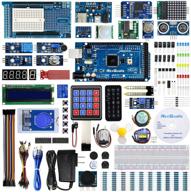
REXQualis Comprehensive Starter Kit with Arduino MEGA 2560 & Detailed Tutorial for Arduino IDE Compatibility

11 Review
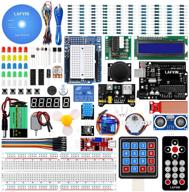
LAFVIN Super Starter Kit for Arduino R3 Mega2560 Mega328 Nano with Detailed Tutorial - Compatible with Arduino IDE

11 Review
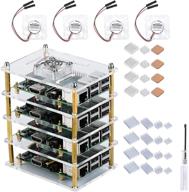
GeeekPi Raspberry Pi Cluster Case with Cooling Fan and Heatsink for Pi 4 Model B, 3 Model B+ & 3/2 Model B

11 Review
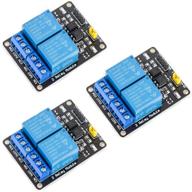
🌐 MCIGICM 2 Channel DC 5V Relay Module: Optocoupler Low Level Trigger Expansion Board for Arduino UNO R3, DSP, ARM, PIC, AVR, STM32, Raspberry Pi

11 Review
Another interesting products

💾 M.2 NVMe SSD Screws for Asus, Gigabyte, and MSI Motherboards - Laptop M.2 Screws

8 Review
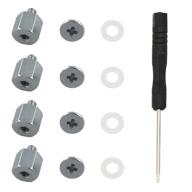
M.2 Screw Kit: Easy Mounting for NVMe SSDs on ASUS Motherboards

19 Review
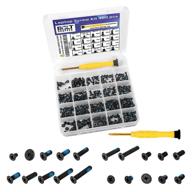
🔩 Enhance Repairs and Upgrades with 400pcs Laptop Screws w/Blue Nylok – Premium Titanium Nitride Screwdriver & Notebook Computer Screw Kit Set

3 Review

Uxcell Phillips Screws Fastener Laptop

3 Review

